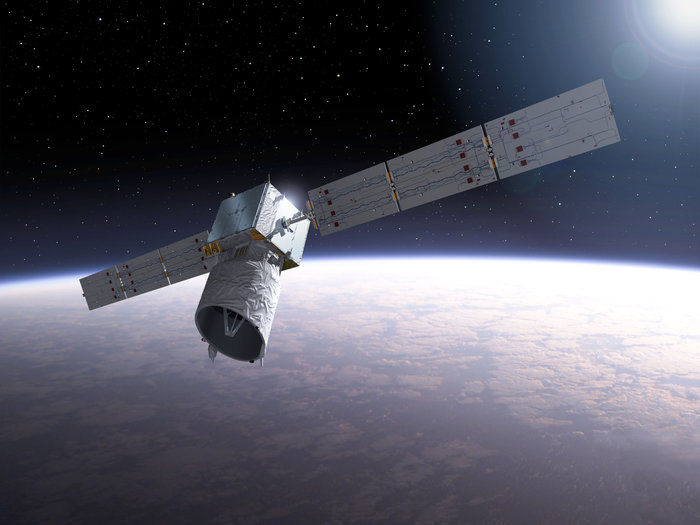
The European Space Agency (ESA) will launch the Aeolus satellite from Europe’s Spaceport in Kourou, French Guiana tomorrow, August 21
ESA’s main mission with the Aeolus satellite will be to map the Earth’s wind and atmosphere in real-time; with data from the satellite anticipated to markedly improve the accuracy of weather forecasts.
It will be the first device in history to measure winds on earth from space at all altitudes. From the surface of the planet through the troposphere and 30 km up to the stratosphere the satellite will be able to measure wind and atmospheric change.
Aeolus carries a sophisticated atmospheric laser Doppler instrument nicknamed Aladin. This piece of kit combines a large telescope with two powerful lasers and an array of sensitive receivers.
The satellite is fitted with some of the most advanced instruments that have been sent into orbit to date.
Aladin’s laser generates a beam of ultraviolet light which is sent towards the earth. This light rebounds off ice, dust and water droplets in our atmosphere. The fraction of light that is scattered back towards the satellite is collected by Aladin’s telescope and measured.
ESA’s Aeolus mission scientist, Anne Grete Straume, commented in an ESA statement: “We expect Aeolus to advance science, whilst at the same time having a range of potential practical application areas by improving forecasts, which is of importance to the wind energy industry, for example; accurate forecasts are just one of the ways in which our mission will be able to help.”

Technical Challenges
The satellite will follow an orbit that ensures its solar panels receive a consistent level of sunlight.

ESA’s Director of Earth Observation Programmes, Josef Aschbacher commented that: “Aeolus has certainly posed some technical challenges, but after all it is completely new – the wind has never been measured from space this way before.”
“Aeolus is set to be a game changer for understanding the dynamics of our atmosphere and it will have real-world applications by being used to improve our weather forecasts. The development path may have been somewhat rocky, but we are all thrilled to see it now in the launch tower awaiting its big day.”
Technicians at the launch site are running comprehensive simulations today ahead of its launch tomorrow night.
Aeolus flight director Pier-Paolo Emanuelli commented that: “Getting a spacecraft safely into orbit is a difficult process, and a tense but exciting time for mission teams on the ground.”
“Simulations provide an invaluable tool for the many engineers, operators and controllers working with the satellite, giving them the chance to rehearse all possible scenarios before the big day.”
“Every satellite has its own unique objectives, orbit and quirks, and Aeolus is no exception. Teams of highly trained engineers, flight dynamics specialists and experts in control systems and ground stations have been practising exactly what Aeolus needs to do, when, and how they will instruct it to do so.”
“It’s a challenging but very exciting time!”






